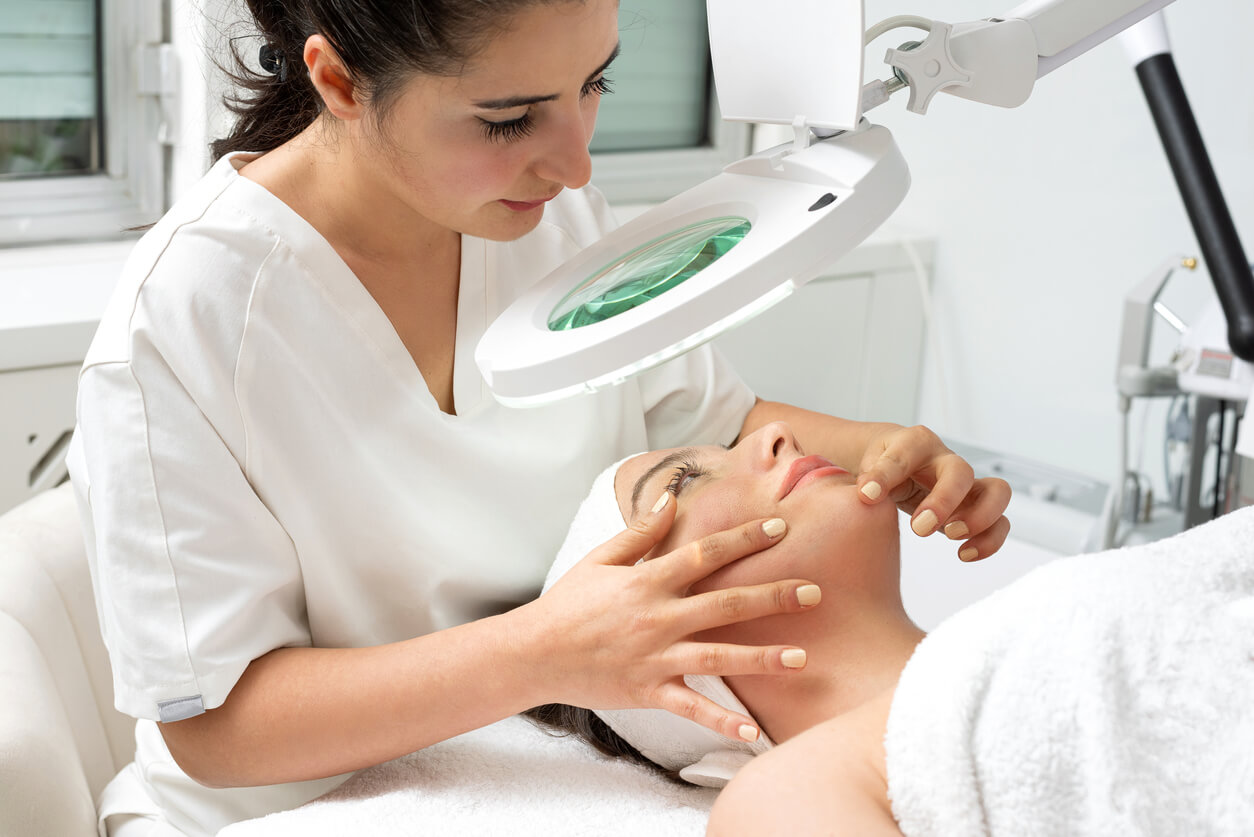The Duty of a Skin Doctor in Diagnosing and Treating Various Skin Disorders
The role of a dermatologist prolongs far past basic skin treatment; it includes the intricate procedures of detecting and dealing with a large range of skin conditions. The intricacy of skin conditions usually needs a diverse method that consists of not just clinical interventions yet additionally client education and preventative approaches.
Value of Dermatological Experience
The competence of skin doctors is important in the medical diagnosis and management of skin conditions, as they have specialized expertise that extends beyond basic clinical training. This innovative understanding is important for precisely recognizing a wide variety of skin disease, which commonly present with overlapping symptoms that can puzzle non-specialist experts. Dermatologists are trained to separate in between numerous skin disorders, ensuring suitable treatment plans are carried out quickly.
Additionally, the area of dermatology incorporates an one-of-a-kind mix of professional abilities and cutting-edge technology. Dermatologists utilize advanced diagnostic tools, such as dermatoscopes and skin biopsies, to assess skin lesions and determine their nature. This technological proficiency enables very early discovery of possibly significant problems, including skin cancers cells, which can considerably enhance individual end results.

Common Skin Disorders Detected
Numerous skin problems can offer with varying levels of severity and complexity, making skin-related experience crucial for exact diagnosis and administration. Amongst one of the most common conditions are acne vulgaris, eczema, dermatitis, and psoriasis.
Acne vulgaris, defined by the existence of pustules, comedones, and papules, largely impacts adolescents but can persist into their adult years. Eczema, or atopic dermatitis, is a persistent inflammatory problem that brings about dry, scratchy, and swollen skin. Psoriasis is an autoimmune disorder that shows up as red, flaky plaques, mainly on extensor surface areas, and can considerably impact the lifestyle.
Various other typical problems include rosacea, which presents with face flushing and visible capillary, and seborrheic dermatitis, commonly resulting in dandruff and oily patches on the scalp. Fungal infections, such as tinea pedis (professional athlete's foot) and tinea corporis (ringworm), are also regularly experienced.
These differed problems need a thorough understanding of pathophysiology, along with knowledge of therapeutic alternatives, to lead effective therapy approaches - Dermatologist Raleigh NC. Via precise diagnosis, skin doctors can give tailored management strategies that deal with both the signs and symptoms and underlying root causes of these typical skin problems
Diagnostic Methods Made Use Of
Just how do dermatologists properly identify numerous skin conditions? Dermatologists use a mix of clinical evaluations, diagnostic tools, and specialized techniques to ensure accurate identification of skin disease. The first step usually involves an extensive medical history and health examination. Throughout this process, skin doctors assess the person's signs and symptoms, start, duration, and any type of potential triggers.
Among the primary diagnostic techniques is dermoscopy, which uses a portable tool to magnify skin sores, permitting detailed exam of structures not noticeable to the nude eye. Additionally, skin biopsies are often carried out, where a small example of skin is gotten rid of for histopathological analysis. This strategy is very useful for diagnosing conditions such as cancer malignancy and various other skin cancers.
Patch testing is another essential method employed to recognize get in touch with dermatitis by revealing little amounts of potential irritants to the skin. Lab examinations, consisting of blood tests and societies, might be carried out to rule out systemic issues or infections. Collectively, these analysis techniques permit skin doctors to create a comprehensive understanding of skin conditions, bring about accurate medical diagnoses and notified person monitoring.

Therapy Alternatives Available
A vast selection of therapy choices is available for handling skin disorders, tailored to the certain problem and specific person requirements. Skin doctors employ both systemic and topical treatments, relying on the extent i thought about this and kind of skin problem. Topical treatments, such as corticosteroids, retinoids, and calcineurin preventions, are typically recommended for conditions like acne, psoriasis, and dermatitis. These agents target inflammation and advertise skin recovery.
For more severe problems, systemic therapies might be necessary. These consist of oral medicines such as anti-biotics find here for bacterial infections and immunosuppressants for autoimmune conditions. Biologics, a newer course of medicines, have revealed effectiveness in treating chronic inflammatory problems like psoriasis and atopic dermatitis.
In addition to pharmacologic treatments, skin doctors might recommend step-by-step choices such as laser photo-therapy, chemical, or therapy peels (Dermatologist Raleigh NC). These treatments can resolve pigmentation concerns, acne scarring, and various other skin irregularities efficiently
Moreover, way of living modifications, including correct skin care routines and sunlight protection, play a vital role in the total monitoring of skin disorders. By combining these treatment methods, dermatologists intend to improve individual results and boost lifestyle for those impacted by skin problem.
Patient Education and Assistance
Empowerment with expertise is essential in the monitoring of skin conditions, as patient education and support substantially affect treatment end results. Skin specialists play a pivotal duty in offering clients with thorough info about their conditions, treatment alternatives, and self-care techniques. Effective communication promotes a collaborative atmosphere where patients can proactively take part in their own treatment.

Assistance expands beyond education; it encompasses psychological reassurance and continuous support. Skin doctors ought to develop a risk-free area for individuals to reveal their worries and ask concerns. Resources such as educational handouts, websites, and support groups can better encourage patients, enabling them to get in touch with others dealing with similar obstacles.
Ultimately, a well-informed client is more probable to participate in their treatment journey, leading to better adherence, fulfillment, and enhanced health and wellness outcomes. The skin doctor's duty in person education and assistance is basic to maximizing the administration of skin conditions.
Verdict
In conclusion, skin doctors play an essential function in the reliable medical diagnosis and therapy of a wide range of skin conditions. The contributions of dermatologists considerably enhance the top quality of life for those impacted by skin problems.
The role of a dermatologist prolongs far beyond standard skin care; it incorporates the complex procedures of diagnosing and treating a vast selection of skin problems. Skin specialists use innovative diagnostic tools, such as dermatoscopes and skin biopsies, to evaluate skin sores and identify their nature. Eventually, the specialized training and experience of dermatologists are essential in providing thorough care for people with skin problems.
In addition, skin biopsies are often carried out, in which a little example of skin is removed for histopathological evaluation. Collectively, these analysis techniques allow skin specialists to create an extensive understanding of skin problems, leading to exact diagnoses and informed client management.